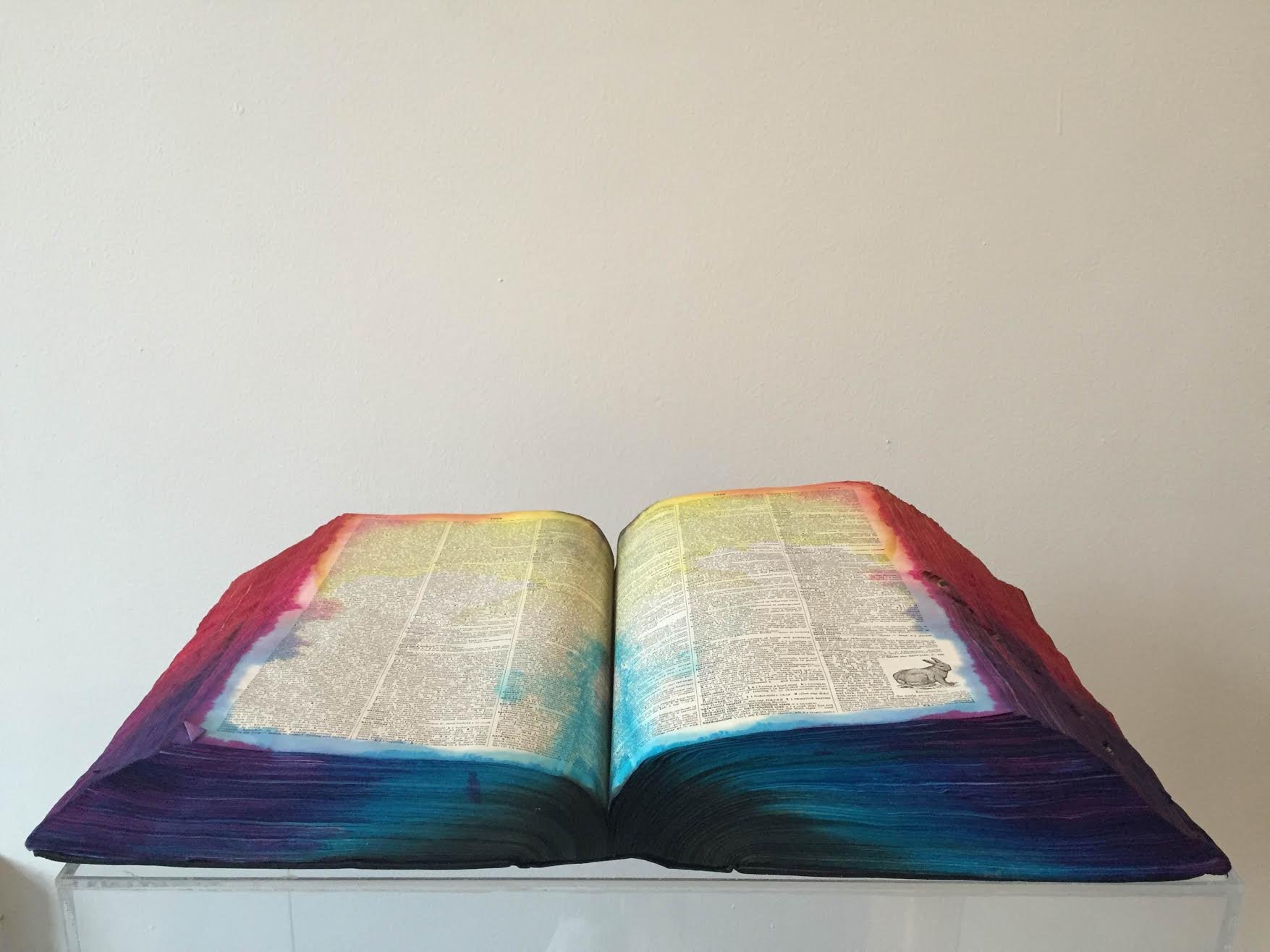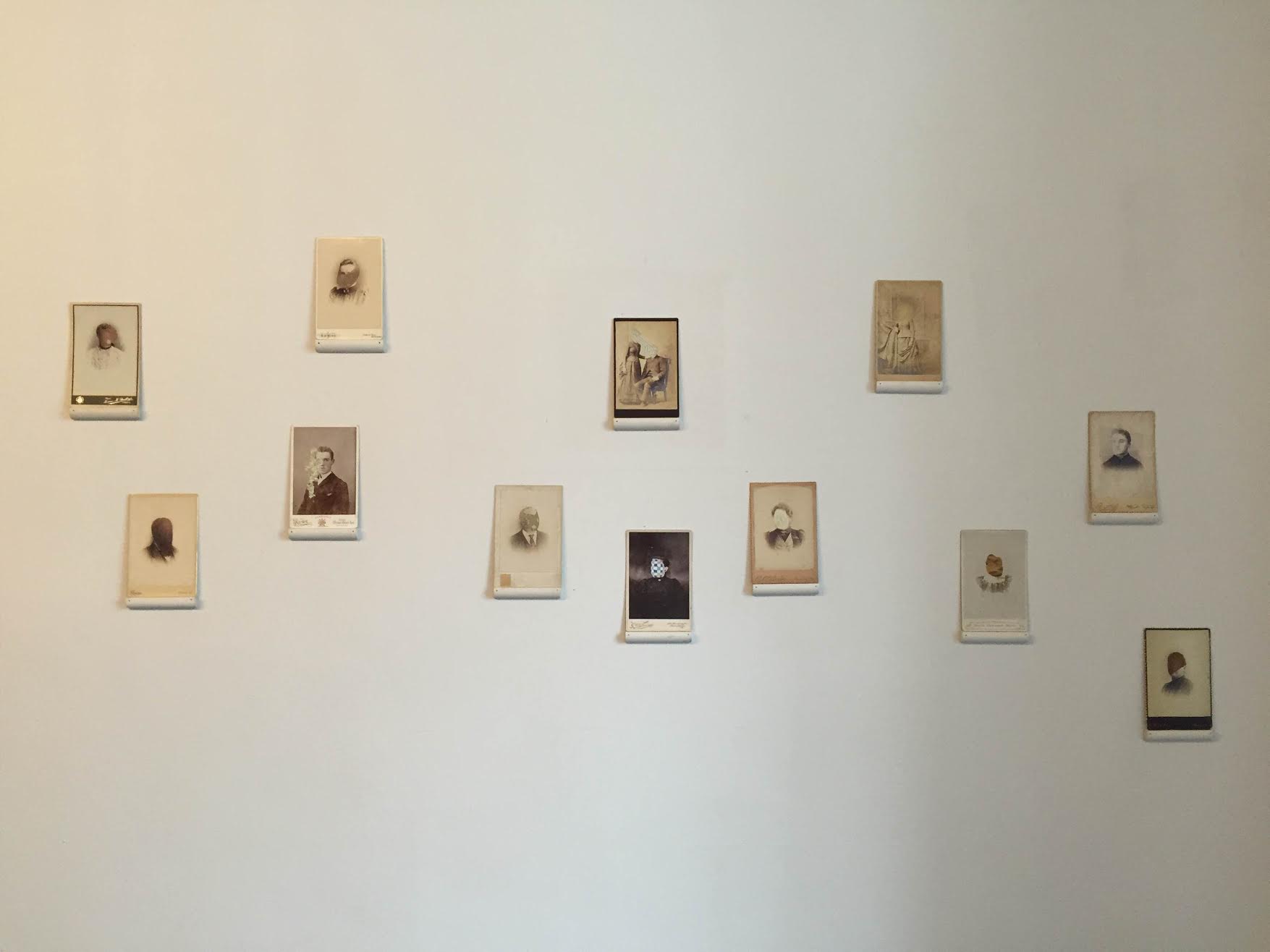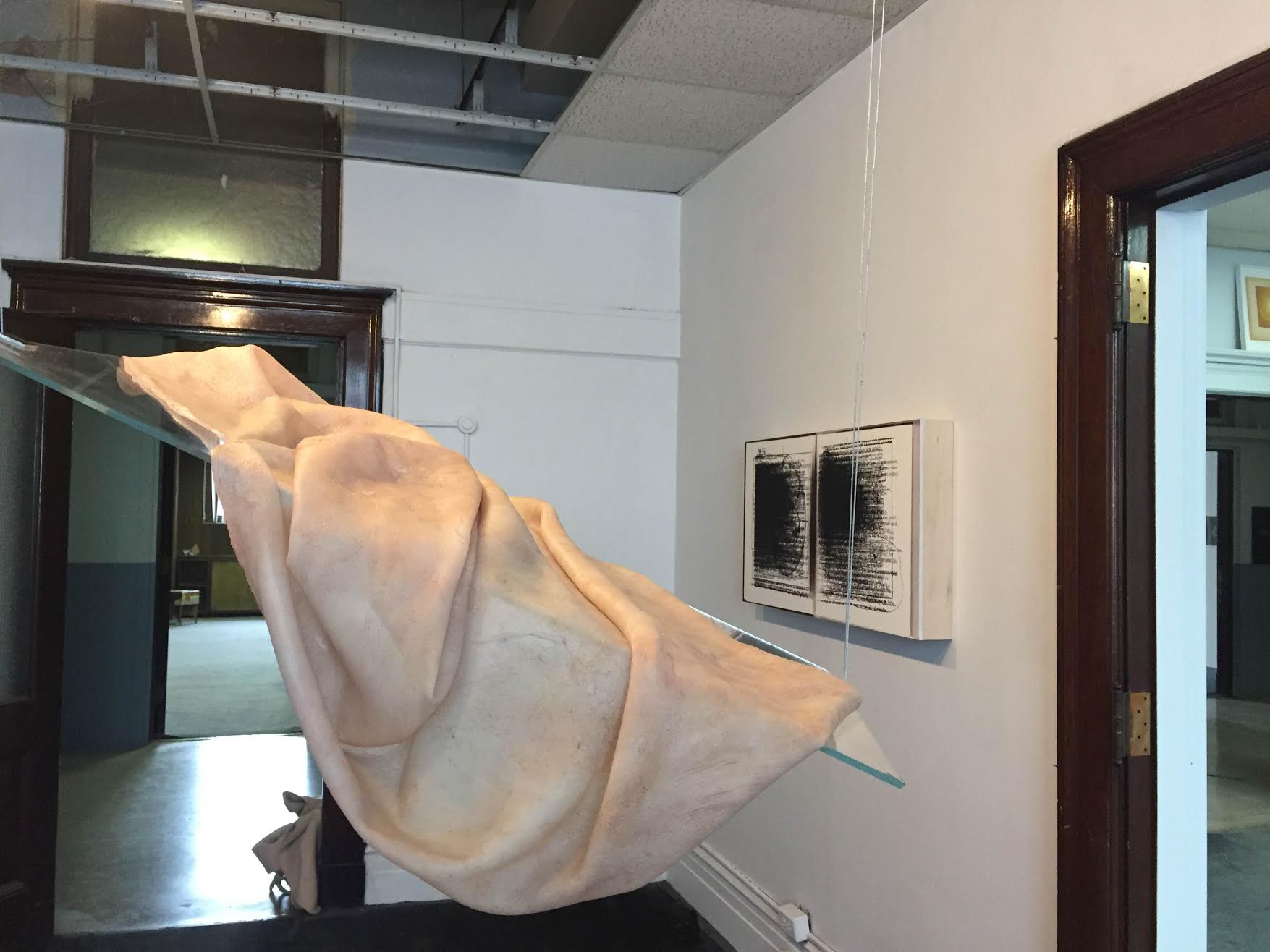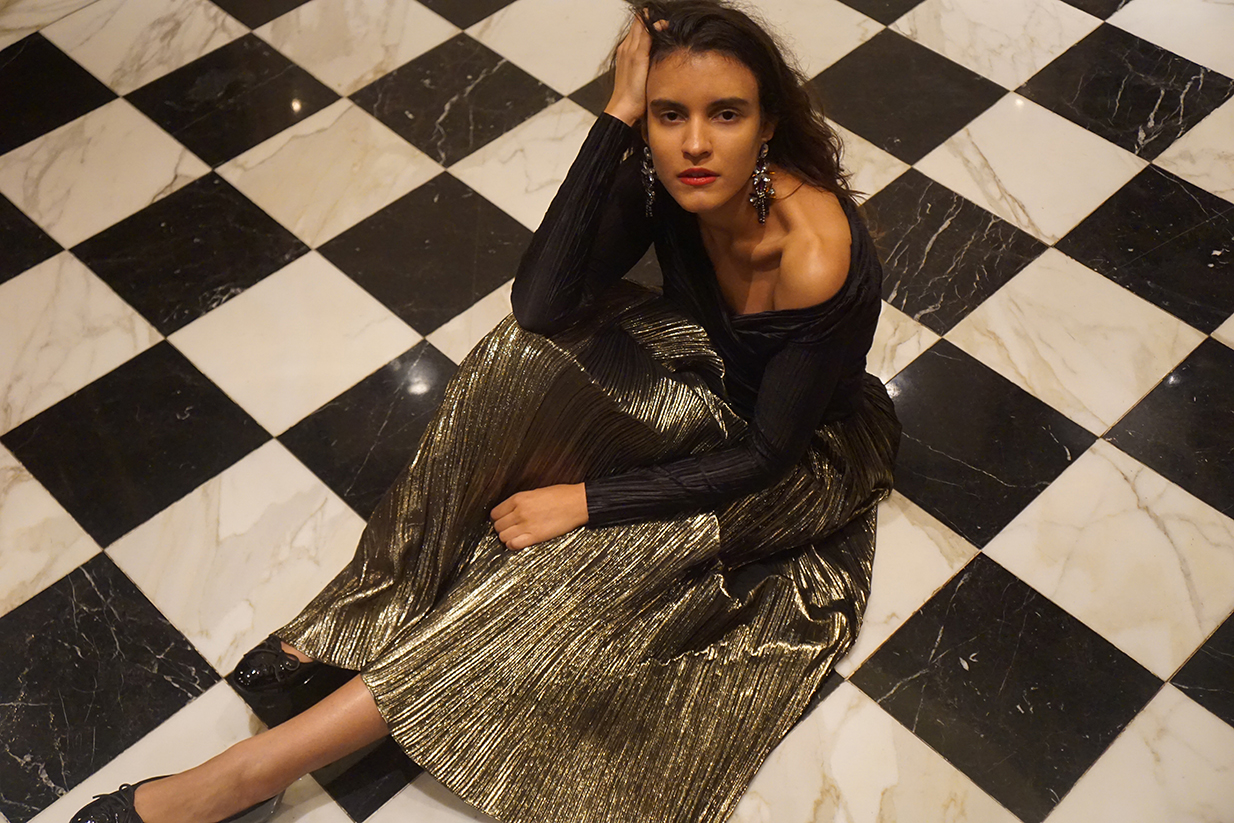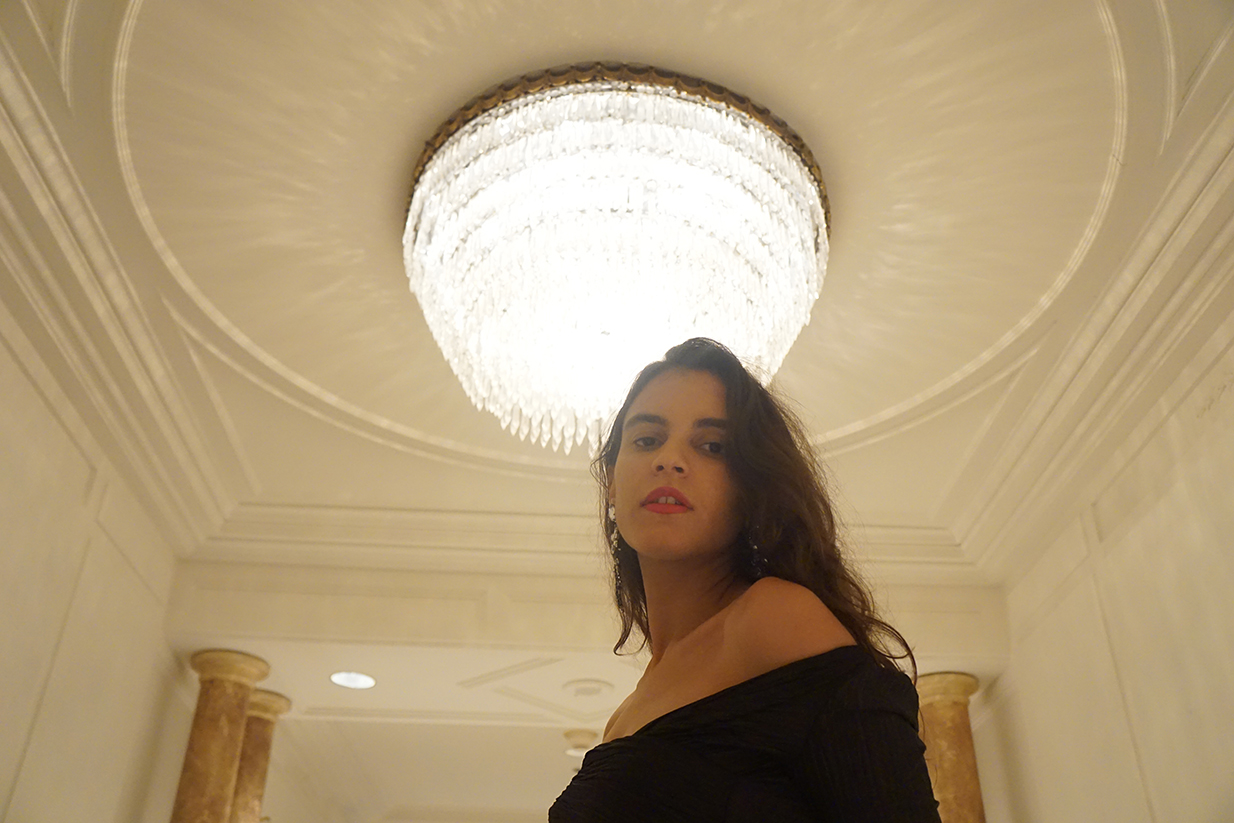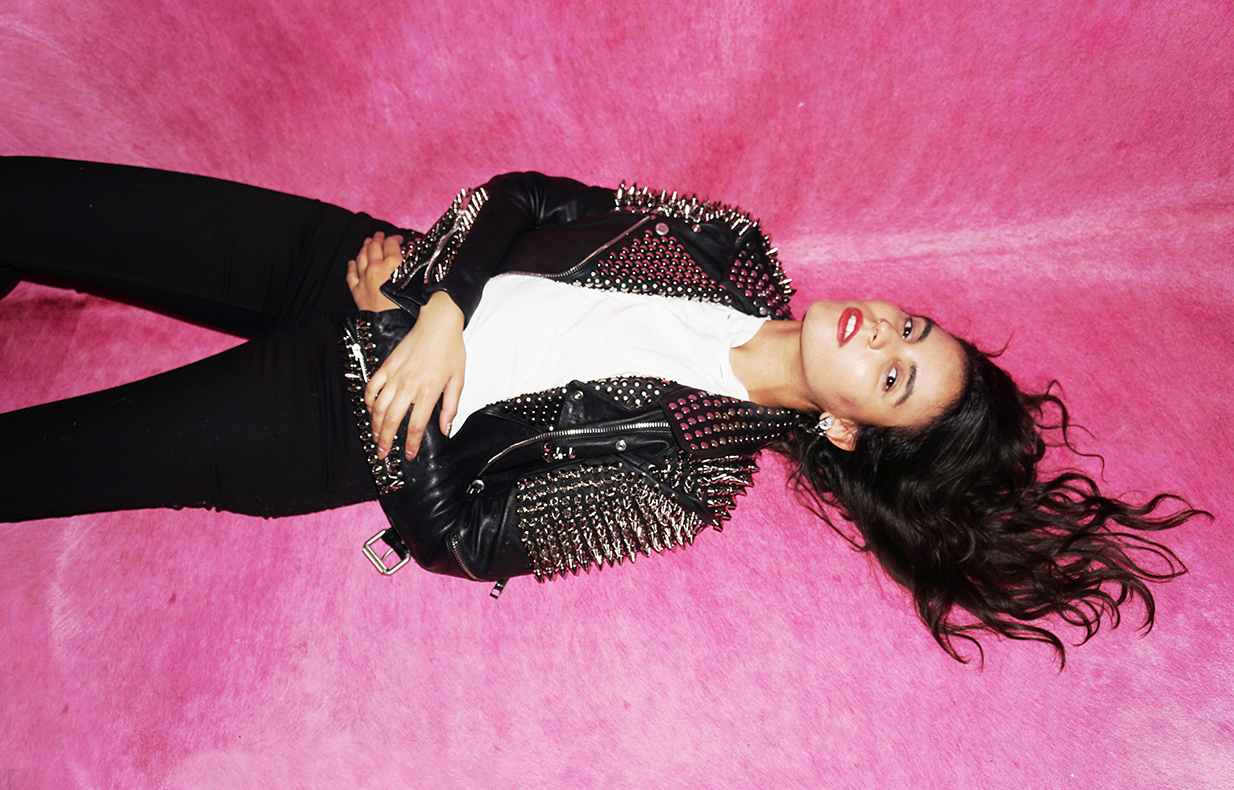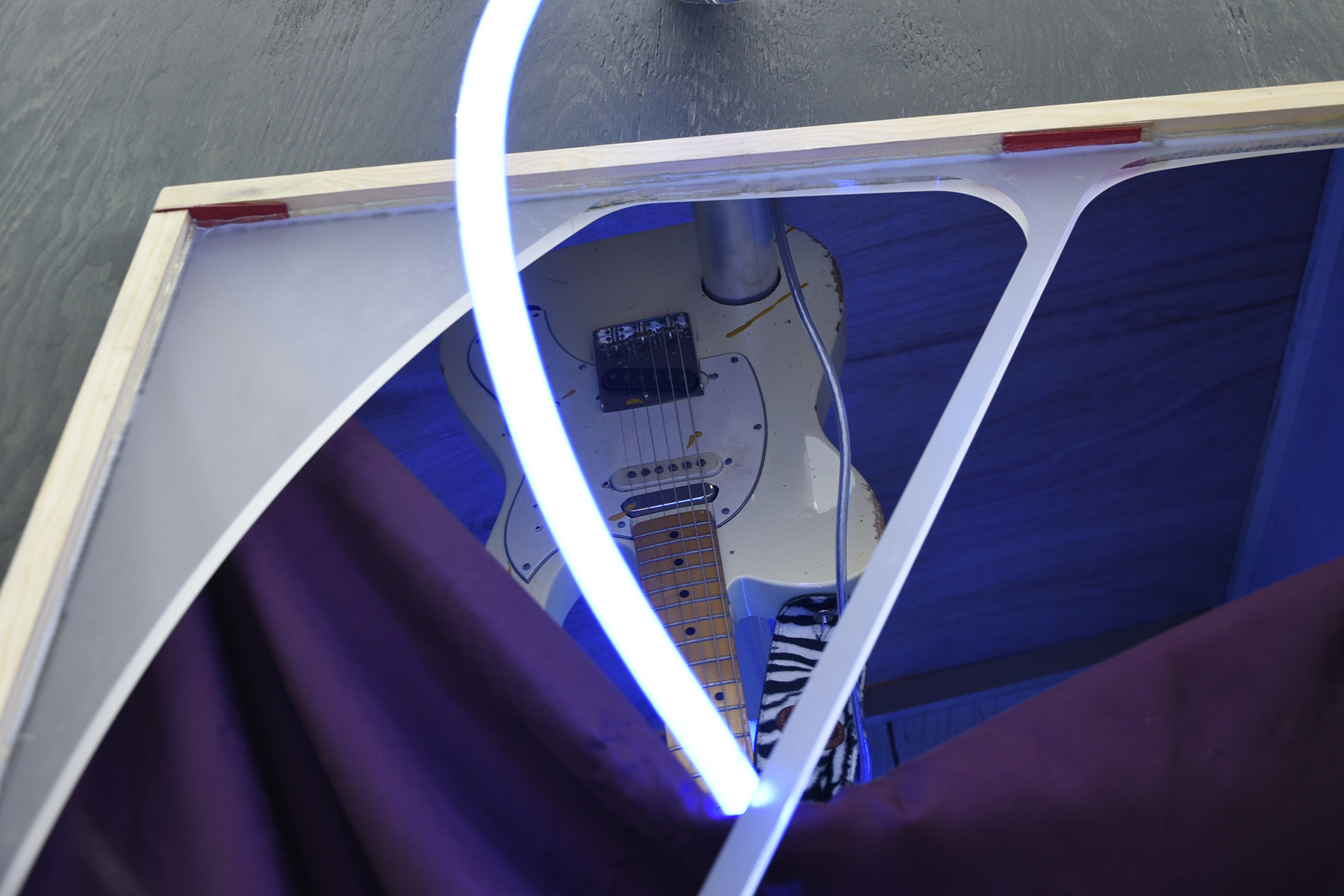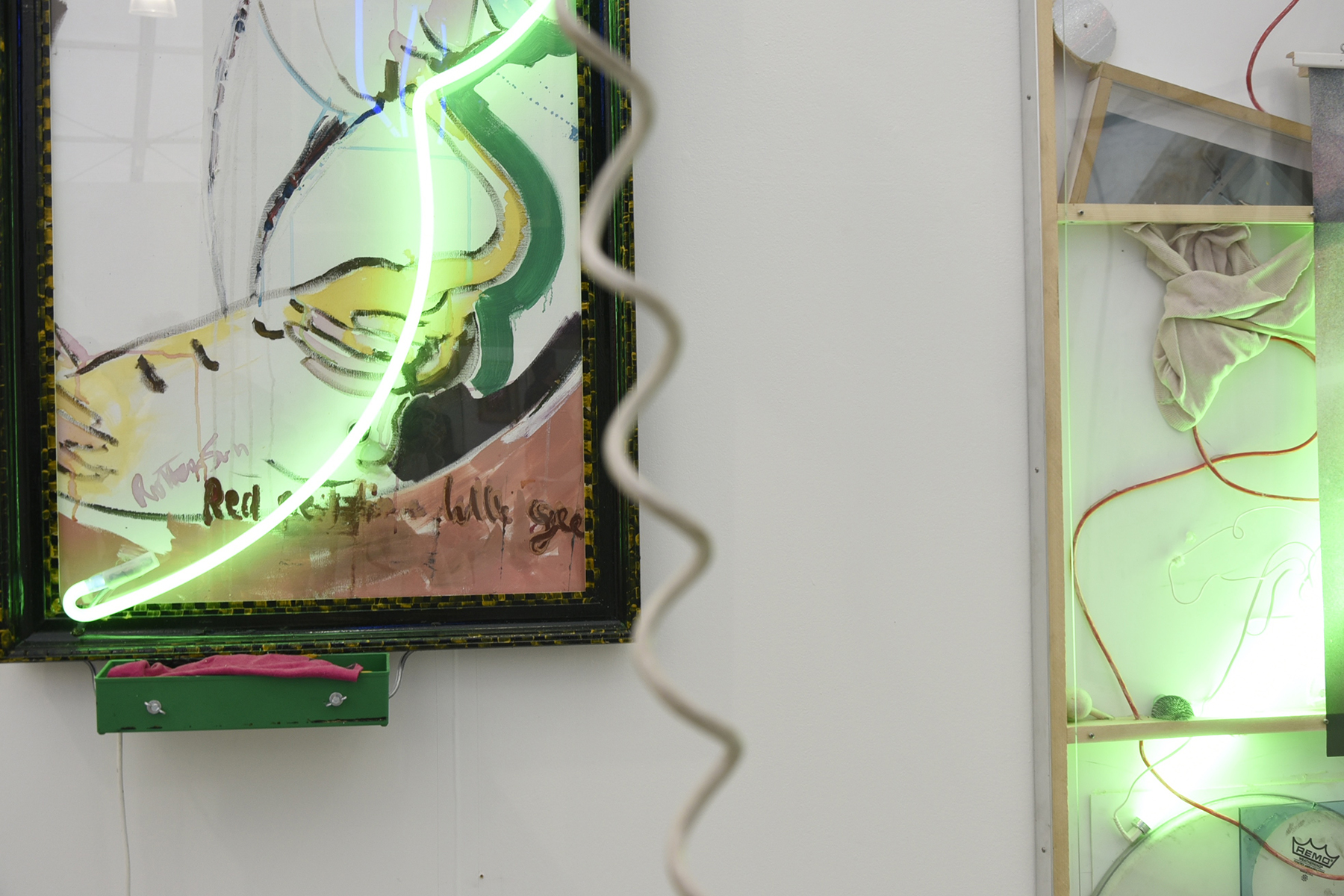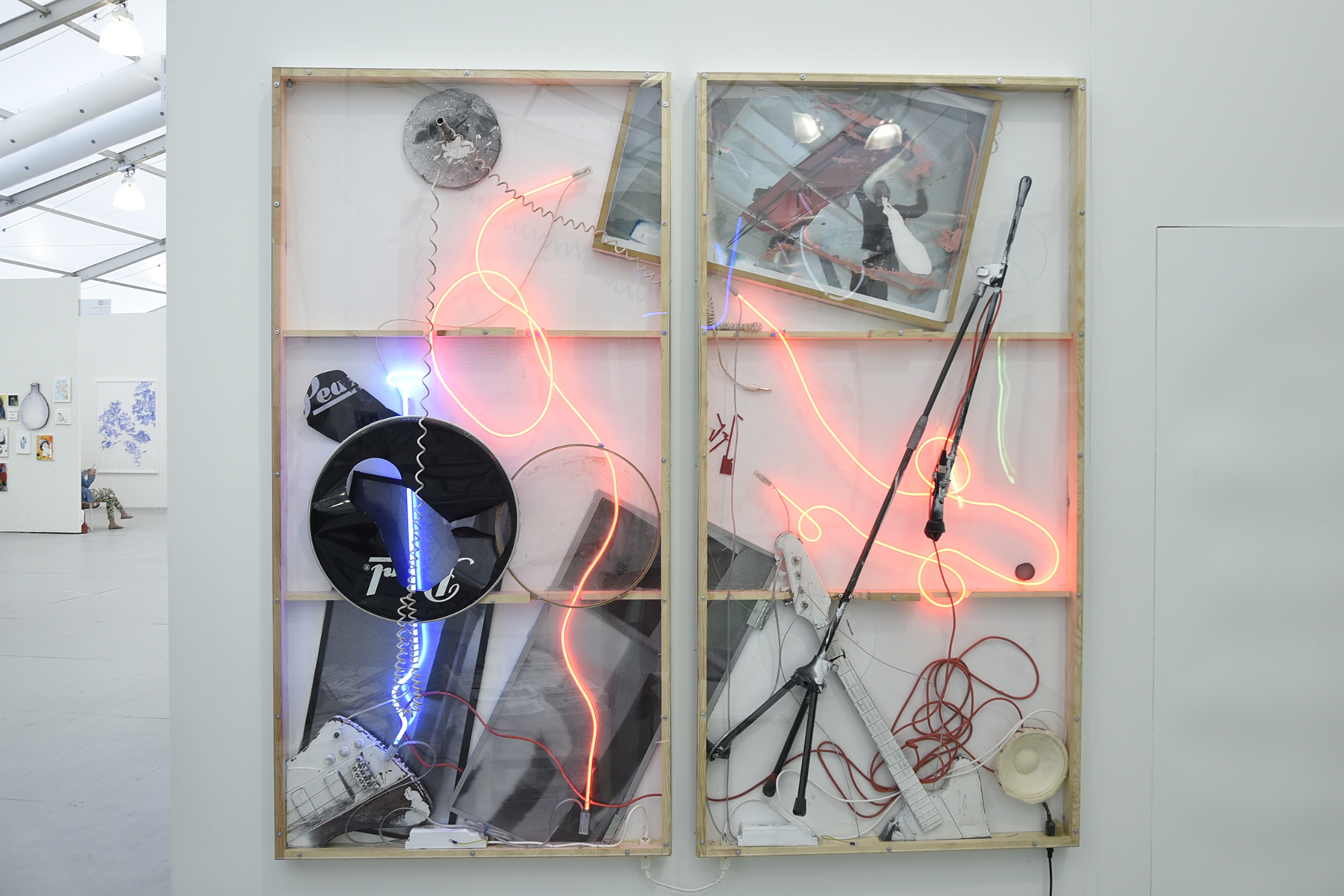text by Oliver Maxwell Kupper
Toby Mott owns one of the largest collections of skinhead and punk ephemera from the halcyon days of anarchy in the UK. A punk himself, Mott has turned his youth in revolt into an enterprise with the Mott Collection, which recently was released in the street edition of Skinhead: An Archive. Punk historian or punktrepreneur, Mott is intent of preserving the legacy of one of the most misunderstood subcultures. Skinheads, although some had nationalist or Nazi leanings, were not all rabid and racist xenophobes. Some, in fact, were gay. Some were Jewish. Some were jocks. Some were women. In fact, the skinheads were the working class alternative to a posh Swinging 60s London, with Cockney and Jamaican roots. Mott acquired much of his archive in real time, collecting posters, patches, posters, zines and more. In the 70s, he was the founder of the Anarchist Street Army, which tried to toss over the establishment in the Pimlico area of London. In he 80s, he lived in squat with the likes of boy George and made appearances in films by Derek Jarman, and was included in Gilbert and George's 'Existers' series. Mott was also the founder of Grey, an anarchist art collective that would vandalize areas of London, spraying grey paint on windows. His involvement in that group got him arrested and banned from the U.K. Today, Mott is more a gentleman than a punk, but a punk at heart. He has shed his leather for a clean, crisp dress shirt and a sharp blazer. We met up with Mott one sunny day by the beach during his recent trip to Lost Angeles to discuss skinheads, his collection and what it means to be punk in the digital age.
OLIVER KUPPER: Skinheads have this association to neo-Nazi culture. Putting out something related to skinheads, people might think that it’s related to Nazi culture. How do you clear up this confusion?
TOBY MOTT: People jump to the conclusion that I am, or I was, a skinhead. But this is a neutral overview of a culture. Most people more readily associate skinheads with fascist, neo-Nazi culture. But one of the reasons for doing the book is to show that it’s much more diverse. There are all different kinds of skinheads. In London, now, if you saw a skinhead, most people would assume that they’re gay. So you’ve gone from a threatening, aggressive, neo-fascist to gay culture. Apart from that, there’s the whole S.H.A.R.P. (Skinheads Against Racial Prejudice) thing, which came from America. It was pretty multi-ethnic in the UK, with The Specials and the whole 2-tone thing. I think it’s the same with most things. The most aggressive aspects get the most press, because they’re newsworthy. But it’s certainly not the dominant element of skinhead culture.
KUPPER: There are multiple subcultures within skinhead culture.
MOTT: Yeah. Within skinhead culture, you get into scooter skins, skinhead girls. When skinhead culture mutates and travels abroad, say, in Eastern Europe, it’s must more militaristic and nationalist. It’s kind of evolved from the original British skinhead. It’s become more uniform. In Russia, there’s a big skinhead culture, but it’s more nationalist.
KUPPER: Were you part of this culture?
MOTT: No. I was a punk. I was actually a victim of skinheads. Skinheads, initially, were born in the late 60s, early 70s. It turned into something called “suedeheads” and then “bootboys,” with the whole football violence, football hooligan thing. The fashion changed and evolved. They were into glam rock, and the reggae thing kind of brought it out. But then when punk came out - say, in ‘76, and the high point in ’77 – there were bands like Sham 69 who were called “street punk.” Somehow, that initiated a skinhead revival. As a sort of look, this was much more developed than the original skinheads. That’s where the uniform evolved and became fetishized – the Fred Perry, stuff like that. They would also attend the same kinds of gigs I was at. Often, at any random point, they would just attack you. That happened to me – which I write about in the book – at a Sham 69 gig. There was just a general level of intimidation between the punks and the skinheads. It wasn’t a happy unity, although we shared the same music. This was before the white power thing. Around ‘78/’79, Sham 69, Cock Sparrer, Cockney Rejects and other punk bands were adopted by skinheads. But punks would also be at the gig. There was an uneasy tension.
KUPPER: What do you think was in the atmosphere during that time that was creating these subcultures?
MOTT: At the time, there was a recession. It was pre-Thatcher; Thatcher was elected in ’79. There was the Cold War. The Labor Party was Left Wing. There was a kind of crisis, especially for young people. There wasn’t really an economic future. That has often fueled youth cultures in Britain, which are often political, not just fashion or music things. Everyone, pretty much, was a part of some kind of subculture. You had goths, punks, skinheads – the whole flamboyant, romantic thing. And then you had football hooligans. But there was never really a passive kid. You always had to be something or other.
KUPPER: Who were the football hooligans?
MOTT: They were the white working class. They got their thrills out of violence. They still exist. But that’s all across Europe. They fight each other. The police have really come down and sent people to prison, but it’s still big. It’s a subculture.
KUPPER: It seemed like punk had a soundtrack, with a lot of bands coming out. With the skinheads, it seems looser. It seems way more personal.
MOTT: Well, there are all different types of skinheads. The white nationalist skinheads would go for things like Screwdriver, No Remorse. There’s a whole culture with these bands – Rock-o-Rama Records. They have a record label, a whole culture, a whole identity. Putting that aside, we also had the whole 2-tone thing, with The Specials and Selector, which are multi-cultural, anti-racist. The look was less aggressive. Later on, in the 80s, you got bands like Bronski Beat, which appealed to the gay identity of skinheads. Then there was the street punk thing, which was referred to as “Oi!” So there’s no one musical influence. Whichever type of skinhead you were, you had your music. Then, you have a sentimental figure like Nicky Crane, who was on the cover of “Strength through Oi!” album. He was a prominent neo-Nazi, but he had a whole secret gay life. He was to die of AIDS later. In a way, he symbolizes the whole story, the whole contradiction within these cultures and identities.
KUPPER: Where does Bruce LaBruce tie in?
MOTT: Bruce LaBruce obviously fetishizes the whole skinhead thing. He’s from Canada. He’s interested because he sexualized it. In a way, if you look at those so-called neo-Nazi skinheads, it’s very homoerotic. The mosh pit thing…
KUPPER: Taking your shirt off, lots of fluids…
MOTT: Yeah. And then to find that some of the most celebrated heroes of that actually have this whole gay, secret life – it’s kind of obvious, right? At the time, though, it was big news. It was in the newspapers. But LaBruce adopted the skinhead look. I’m not quite sure how it’s viewed. Some of the original skinheads don’t appreciate this imagery, I’m sure. They write to me about my book, “How fucking dare you?” They don’t even want to acknowledge it.
KUPPER: When did you start collecting this material?
MOTT: I collected punk stuff as a punk. I was always fascinated by the skinhead element that was around me. I always collected the political pamphlets, from the both the Left and the Right, which were being circulated. The skinheads were the people circulating the extreme Right Wing stuff. It just added to my punk collection. Then later, in my discussion with the publisher, I stripped out the skinhead part of my punk collection, and it made the book.
KUPPER: Was there a Penthouse article that explores this material? What was that about?
MOTT: Weirdly enough, that features Nicky Crane. I think the media has always been fascinated with skinheads because they are violent. Although, as I’ve said, they weren’t all violent. The one the media concentrates on are the violent ones. American Penthouse did an article about British skinhead culture. But they don’t really have a say. In opposition, there are all these anti-fascist groups. But that story isn’t always as newsworthy.
KUPPER: You had a confrontation with skinheads at a venue. Were there any other terrifying moments in your experience?
MOTT: In my foreword to the book, I write about being surrounded by skinheads. There were some notable events. There was this thing called “Rock Against Racism” in 1978, to combat the rise of fascism. They very cleverly had bands like The Clash and Sham 69 to play these concerts. Everyone would go. On the way to one of these events, we were cornered on the top of a double decker bus. I was with my two sisters, who were punks. Because they fancied my sisters, the skinheads, we got by. It was another close shave. The interaction with the skinheads was aggressive. That was their mode of communication. Punks are much more articulate. Skinheads were never adopted by middle class kids like punk was. Punk was pretty much all-inclusive – race, class, whatever. The skinheads were always working-class. Not always white, but the majority were.
KUPPER: I don’t think a lot of people realize that punk was more temperate than skinhead.
MOTT: Skinhead was rigid. The uniform was rigid. Punk was inventive and creative.
KUPPER: Like hippies with mohawks.
MOTT: Skinhead was all-formulaic – these clothes, this haircut. It was militaristic, like a uniform.
KUPPER: That was all new at that point. Now, we have this completely different perspective of what punk is, just because it’s been commercialized and sexualized. Is it an attitude?
MOTT: Yeah, punk’s an attitude.
KUPPER: You don’t need to dress like that. You can be a punk in the way you look at work, at life.
MOTT: I think the book fair is punk, because it’s got that whole DIY thing. It’s not punk to look like a punk from the ‘70s or ‘80s. That’s not punk; that’s retro. I think the book encapsulates the whole ethos of do-it-yourself. The Internet is a gateway to that. But the Internet might be too easy. It depends on how you use it. What is punk today? Punk is an attitude. A creative attitude.
KUPPER: Going back a little bit, to the idea of skinheads shaving their head – what do you think the symbolism behind that was?
MOTT: I think the main thing about skinheads even from the late ‘60s was they would lose the identity of being working class. The manual labor was being lost with the rise of technology. By the late ‘80s when it was revived I think it was a safe place if you were lost, white, working class, and your whole future was being eroded. They fetishized the workman’s uniform. I think that’s what happened.
Also, some people like a code, like wearing black. That appealed to some people. Then they also had the camaraderie and the whole homoerotic thing.
KUPPER: I had always heard that the shaved head had to do with lice from working class individuals living and working where they were getting scabies and lice – that it was just an easy way to avoid that.
MOTT: A utilitarian thing. It also means you weren’t a hippie. The thing about the ‘60s skinheads is that their hair wasn’t as short as the later skinheads when what you wear became much more defined. There’s that book – The Skinhead Bible – which maps that out. But yeah it comes from working on a building site.
KUPPER: In terms of outsider culture going on today, do you notice any prominent subcultures that are making an impact?
MOTT: There’s always elements in hip hop culture. In the UK we have a thing called Grime, which is an underground thing. Then there’s the trans culture, sexual identity thing that is very outsider. It’s hard because now everything comes to the floor so quickly, nothing has time to become anything before it’s either exposed or picked up by a celebrity. I think for people who don’t find their place in the world how it is, they gravitate towards each other.
KUPPER: It’s interesting what’s going on in terms of the trans community and the gay community. Especially with fashion.
MOTT: I come from a world where gender is very clearly defined with expectations, but now it’s much more fluid.
KUPPER: Where did you grow up?
MOTT: I grew up in Central London.
KUPPER: What did your parents do?
MOTT: My father was a professor, my mother was a social worker. I was a middle-class punk. My parents met at art school so I came from a bohemian or what’s called the intelligentsia background. My emersion in punk was from making fan zines and that whole creative area, I went to art school.
What I find really fascinating about skinhead culture is that none of that culture was created by people I meet. A lot of what punk is supposed to be about is the kind of clothes, which came from these deprived backgrounds, whereas in fact it came from art schools. Skinhead culture is not from art schools. None of them went to art school, hardly any of them went to school. So it’s amazing there’s these artifacts. It’s less informed than punk. People who were involved in punk are informed about Dada and stuff like that; skinheads aren’t. It’s got a raw uniqueness to it. Some of this stuff comes from towns in Scotland and fucking nowhere. Deprived places.
KUPPER: Yeah, industrial towns.
MOTT: Yeah.
KUPPER: Where does Joy Division fit into all of that? It seems like they’re in this in-between place.
MOTT: Joy Division is from Manchester but they’re not related to skinhead culture. They’re too sensitive. They’re articulate and sensitive but they’re also from the same kind of background so they could have been skinheads. There were always kids who were more into music and girls than football and violence; they became punks like Joy Division. If those weren’t choices, then you became a skinhead.
KUPPER: So just fate?
MOTT: It was kind of predetermined. If your family members go to prison, you’re going to be a skinhead. If your family members go to art school, you’ll probably be a punk. I think in America it’s different so I can only talk about the British experience.
KUPPER: Americans seem very inspired, though, by the British.
MOTT: I get the idea that some of the people I’ve met here that were in skinhead gangs could possibly be from middle-class backgrounds. That really didn’t happen in the UK. There is a class structure there, and even in the subcultures it powers through. Apart from punk where everyone goes. But like I said, that was the more creative and rebellious kids.
KUPPER: I think that the white power thing in skinhead culture is a very American thing. It’s very difficult to find non-racist skinheads in the US.
MOTT: I think they just get more attention. And they’ve murdered a few more people. There’s always psychos right? But also they’re organized like the whole Tom Metzger thing and get more press. In Britain we have white power skinheads aligned fringe Neo-Nazi groups.
KUPPER: In terms of where the book is going – there’s a second edition that’s out now. Will there be a third edition?
MOTT: There probably will be a third. What’s interesting is that we always add something new. Who knows!
KUPPER: We live in such a digital age now, how do we collect this ephemera that’s alive today? What’s your advice?
MOTT: A lot of it is in the music world. I don’t know because I’m not sure how information circulates now. In my day you would be informed of a gig or an event on a piece of paper. Now it’d probably be on a PDF. Who wants to collect PDFs?
KUPPER: Who wants to print a PDF? (Laughs.)
MOTT: I don’t know, it’s just something else. Luckily for me most of my projects end with facture in ’90 or ’91. That’s the beginning of rave and the whole dance, hip-hop scene. Once it goes digital and online it’s different.
KUPPER: But now with the book fair it seems like zine culture is very much alive.
MOTT: Yeah there’s this whole analogue culture driven by the internet. It’s very exciting.
KUPPER: It is very exciting; we’re trying to explore that right now.
MOTT: I’m very pleased to be a part of that. I think it’s very important that things have an actuality rather than just an online presence. The book fair is amazing, it’s not even a retro thing. It’s real.
KUPPER: It is. I don’t think people are using it in a derivative way where they’re trying to recreate something from the past. It’s definitely very new, and I love what Printed Matter is doing.
MOTT: And it’s global. It’s all over Europe. These books are also beautiful objects, it’s not like buying a book on Amazon. It’s almost like some sort of art thing.
KUPPER: There’s a lot of freedom in DIY, you’re not really censored by anything specific.
MOTT: And it’s not economically driven. It’s not a money thing.
KUPPER: No one’s making money.
MOTT: No one’s making money, and everyone knows there’s no money to make so it’s kinda cool. (Laughs.) There’s a few people in it who want to make money, but that’s why I always say to them that there’s no money to make. So do something else. In a way it’s kind of pure; the fact that there’s no money other than being able to cover the cost of doing the project.
KUPPER: That’s why you have your day job. What do you think about magazines like Richardson magazine outside of the scope of everything else?
MOTT: Andrew [Richardson] is a good friend of mine. I don’t know if it’s a parody of a porn magazine or if it’s a way of being a porn magazine for a new audience.
KUPPER: Interesting. Because he doesn’t really say it’s porn, it’s a sex magazine. It’s not a porn magazine even though there’s only porn stars on the covers of every issue.
MOTT: I think to do that kind of thing it’s got to be away from the male gaze. I don’t know enough about porn, it’s a massive culture. It’s the biggest thing. He plays around with that but he’s really created a clothing brand.
KUPPER: That seems very punk in and of itself what he’s doing.
MOTT: Yeah I guess so. He’s taken something that most people find offensive and some people find acceptable, but not all people do. It’s a fine line.
You can follow Toby Mott on Instagram here. Purchase the "street edition" of Skinhead: An Archive on Ditto Press Text, interview and photographs by Oliver Maxwell Kupper. Follow Autre on Instagram: @AUTREMAGAZINE


